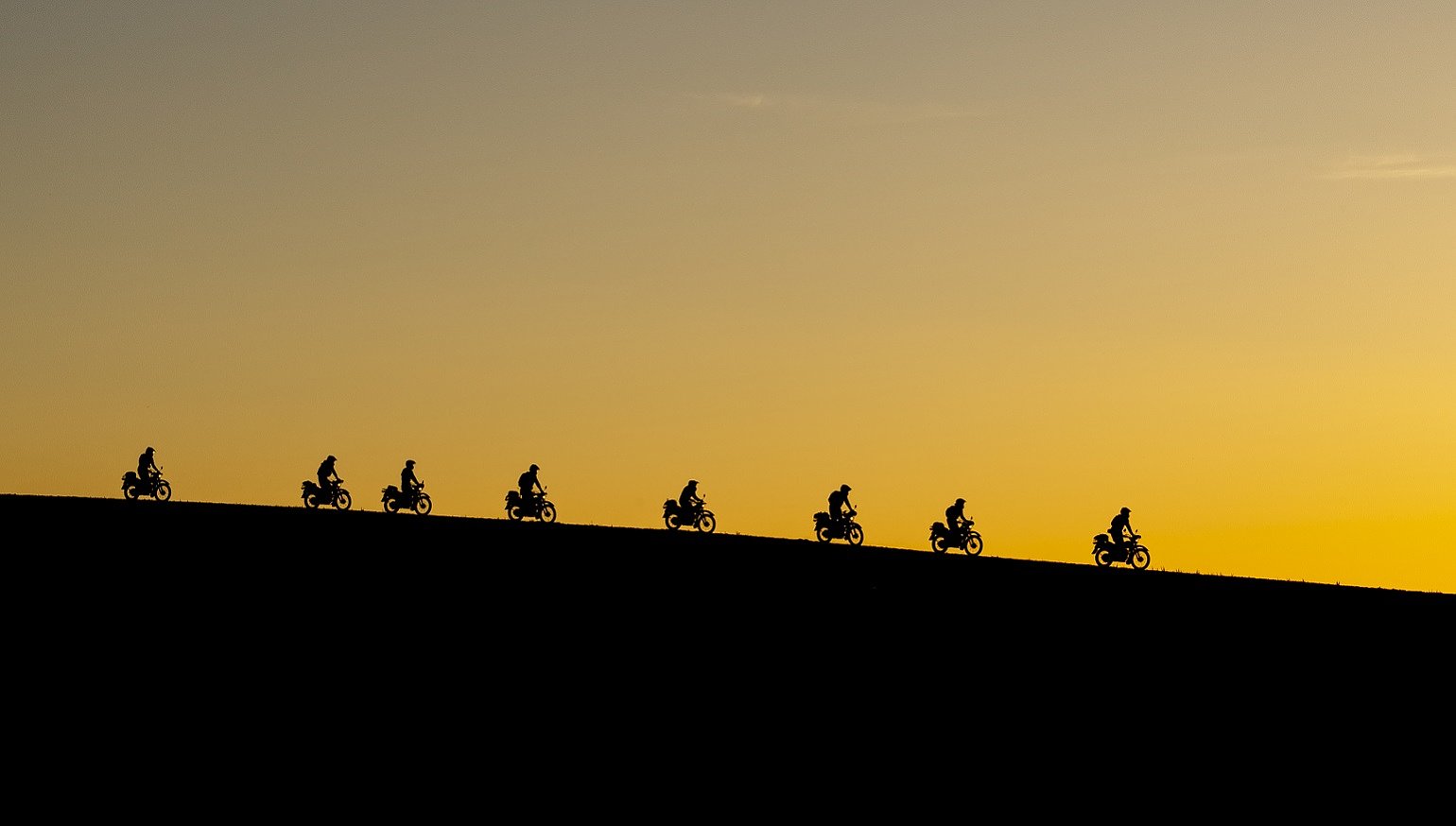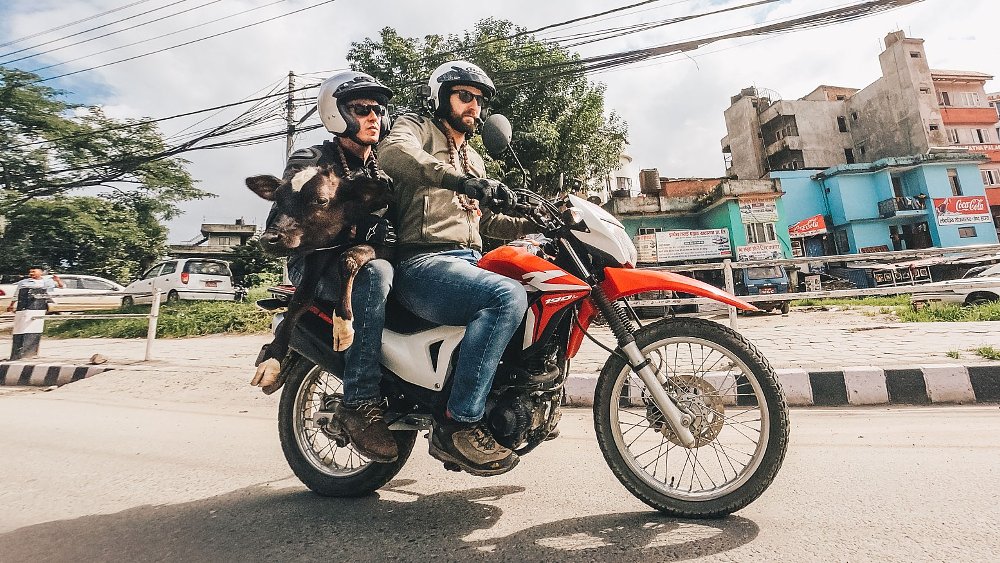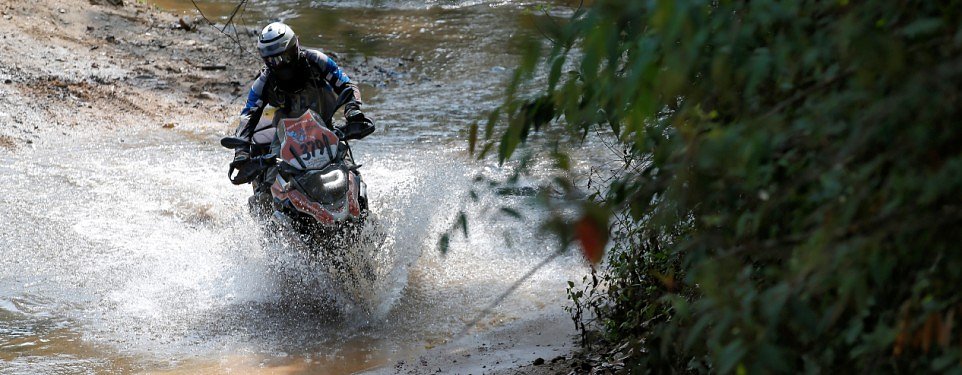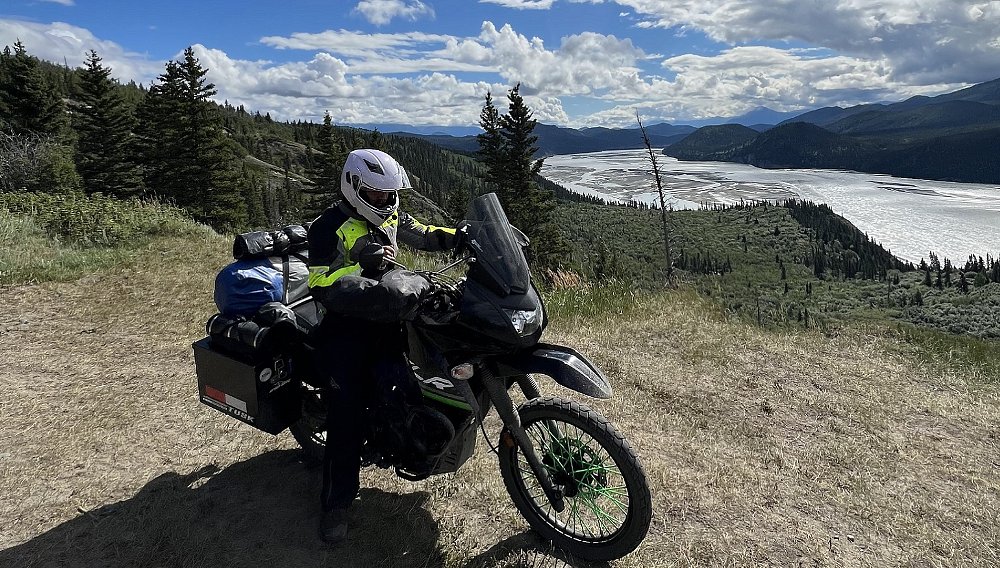For most of us who ride, the excitement of hitting the road (or trail or track) is reason enough. That's part of the allure of bikes: Escaping the World™. But what if you also had a chance to make a difference in the world? Fun will always be fun, but could it be… more?
For the volunteer bikers, documentary filmmakers, and conservationists working with Rally for Rangers, the answer is a collective, resounding yes.
What is Rally for Rangers?
Rally for Rangers got its start organically. Back in 2013, some retired U.S. National Park Service employees were visiting Mongolia in cooperation with the Mongol Ecology Center. Robert McIntosh, Rally for Rangers co-founder, saw a local park ranger try to intervene with a visitor who was riding off trail, but when the ranger's motorcycle hit an embankment, it literally fell apart. McIntosh looked at his companions and committed to bringing that specific ranger a motorcycle the following year. As it turned out, other riders and U.S. National Park Service members back home thought that was a pretty good idea, too. The next year, in 2014, rather than bringing just one bike, Rally for Rangers as a crew donated its first 15 bikes.
"We realized after that rally we were onto something," said Tom Medema, Rally for Rangers co-founder and a 33-year NPS veteran. "More people wanted to do it."
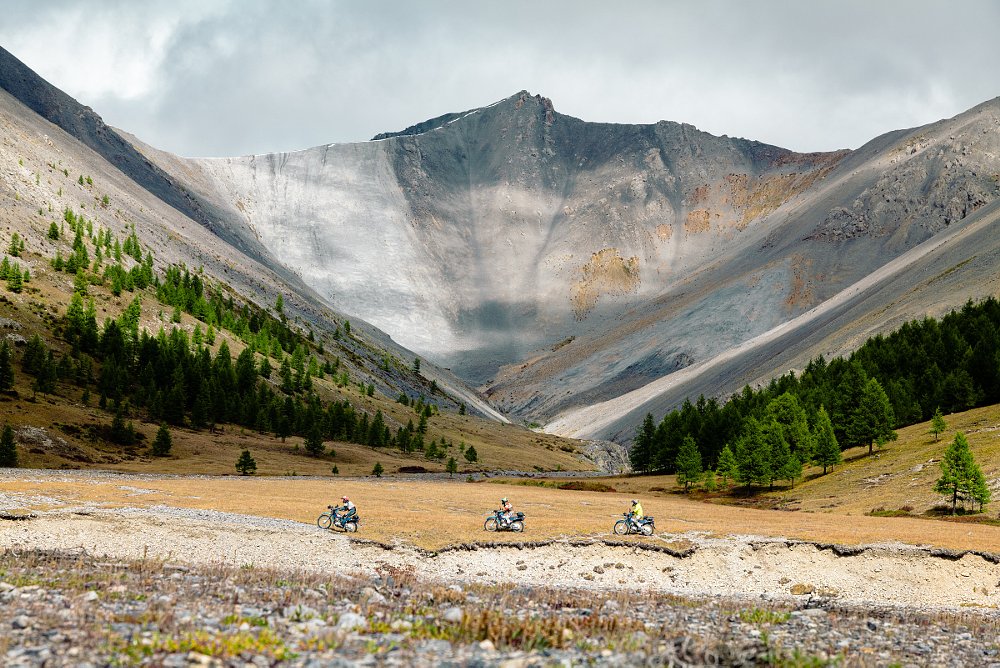
Rally for Rangers supporters do more than just make a donation. They raise funds used to buy motorcycles in the destination country then they personally deliver those motorcycles via intense overland journeys to courageous but underfunded national park rangers working in some of the most remote regions of the world. Officially, Rally for Rangers is a program of the non-profit Mongol Ecology Center, but it has expanded beyond Mongolia. In the past 10 years, Rally for Rangers has donated more than 160 bikes in six countries, and this year the organization is planning to deliver bikes to parks in the United States for the first time.
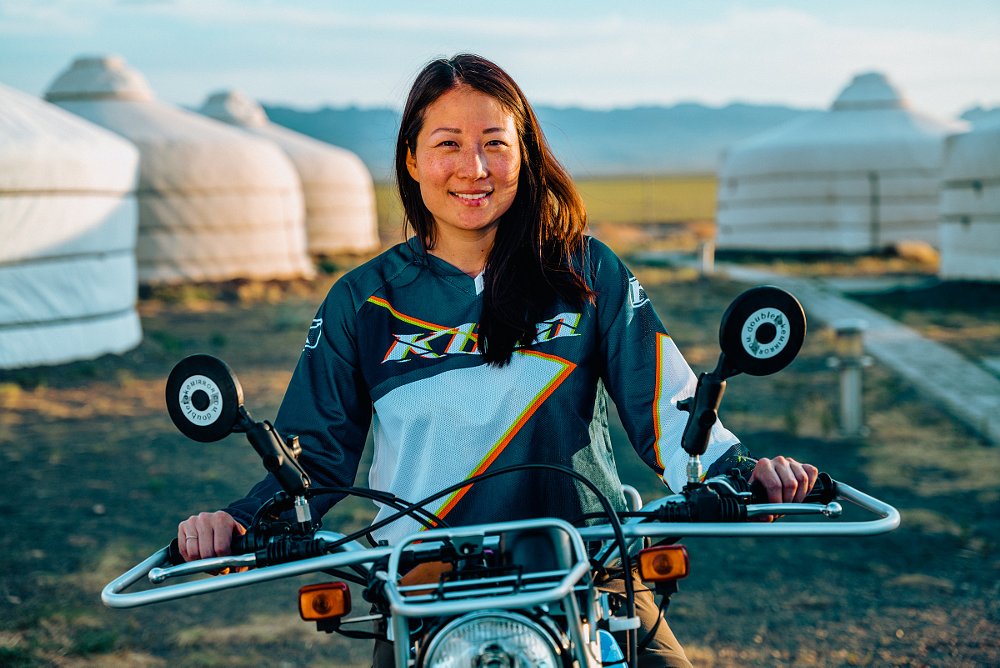
It's that personal connection that makes Rally for Rangers so meaningful to participants. Anna Kim, who has raised more than $55,000 for Rally for Rangers and participated in five rides, said she saw firsthand how a new motorcycle and the mobility it provides means so much to rangers in remote places.
"That means you can see your kids every couple of weeks, not every two months," she said. "It just has this huge impact that seems small scale, but it's on a very personal level."
How a motorcycle can help a ranger, save a snow leopard
National parks are a somewhat new concept in a global sense, having caught on worldwide at varying speeds after the creation of the first national park, Yellowstone, in 1872. In the most remote of these relatively new parks, conservation infrastructure ranges from slim to nonexistent. Lake Khovsgol National Park in Mongolia, for instance, which is almost double the size of Yosemite, might be patrolled by as few as 15 rangers, compared to Yosemite's 700-plus full-time and seasonal NPS staff members. Generally, these immense stretches of land are covered on foot or by horseback. So, when Rally for Rangers hands off a bike, it comes as a genuine boon to a ranger who might be combating poaching, illegal mining operations, artifact hunting, and more.
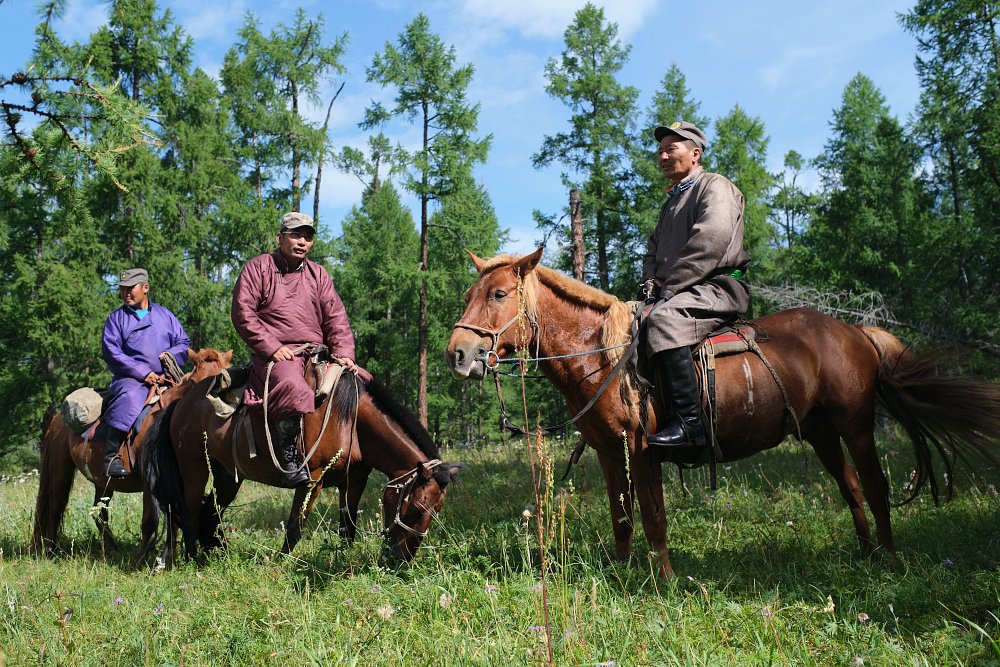
If defending some of Earth's most remote and precious sites on foot or horseback sounds like a tall task, you're right. But it's the daily reality for many park rangers around who often struggle to keep up with poachers and other illegal mining operations, sometimes needing to track suspected illegal activity for days. A reliable, new motorcycle can make all the difference in helping rangers be more mobile and effective.
"Walking the terrain with them made me realize just how impactful a motorcycle is to their work," said Susan Seo, a Rally for Rangers participant who also coaches with Heavy Enduro Racing out of Chicago. "It means being able to respond to illegal mining and poachers within minutes or hours instead of being a day late."
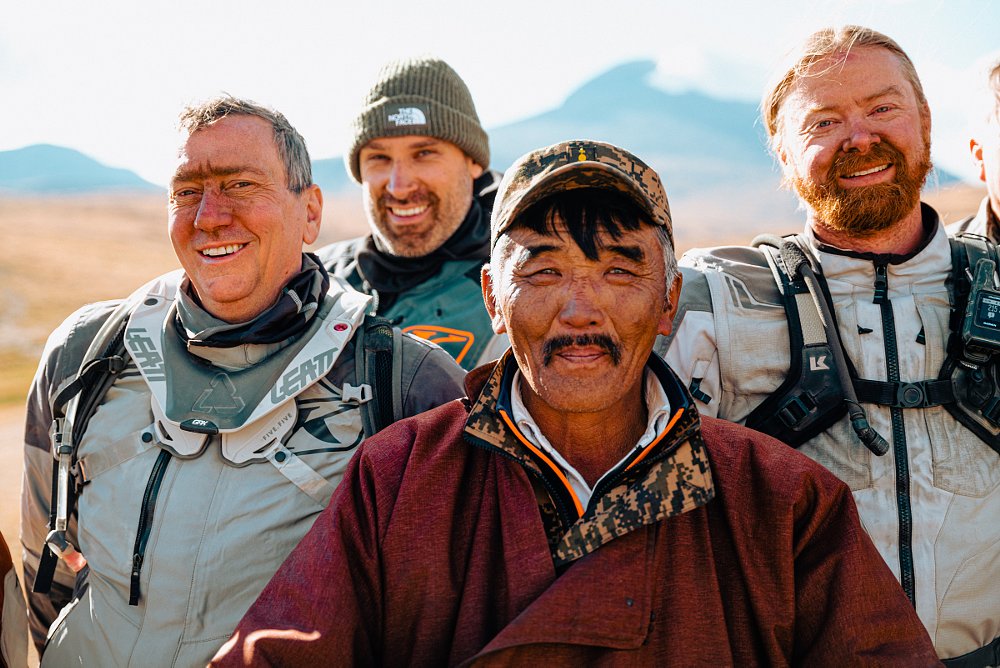
Knowing they have international support is also meaningful to rangers who may face harsh community backlash and be ostracized for their work. Mike Ferrell is a four-time Rally for Rangers rider, a filmmaker, and co-founder of TopTop Studio, which produces social media content for the organization. He's seen the problems rangers face in their own communities.
"These rangers are facing serious threats because of the work they're doing," Ferrell said. "People are trying to make a living by poaching, by digging for minerals, by logging, whatever it is."
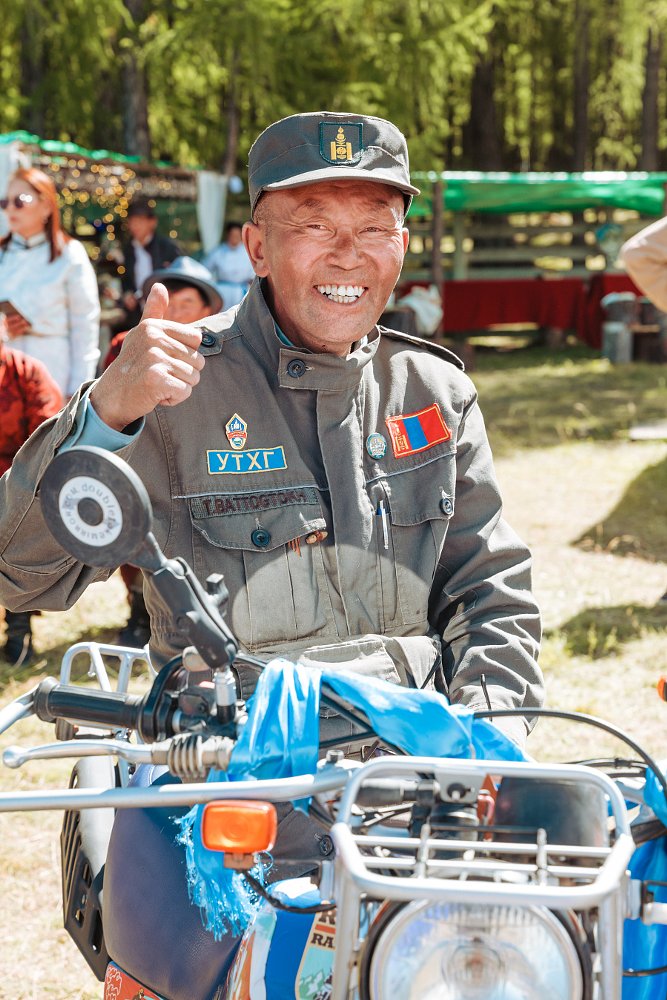
That international trade is the real problem, but the rangers are the ones who live the conflict. Some have been threatened with violence and two motorcycles donated by the program were destroyed. In a documentary (more about that later) about Rally for Rangers, made by Fisher Creative, one ranger recounts his struggles as a member of his community after 30 incidents of poaching occurred while he was away for training.
"Even people I considered dear friends poached wildlife in my absence," the ranger said. "I remember going to their homes in tears to confront them… people wouldn't acknowledge or talk to me because of the job I was so passionate about."
"I think it shows the value of the work being done," Ferrell adds. "When you start getting pushback, when people start going against the work that you're doing, that means it’s been effective. It just goes to show, you've got to double down."
Because of Rally for Rangers, the rangers "see that there's this international community of people supporting them, who care about the work they're doing, who value the work that they're doing," says Anna Kim.
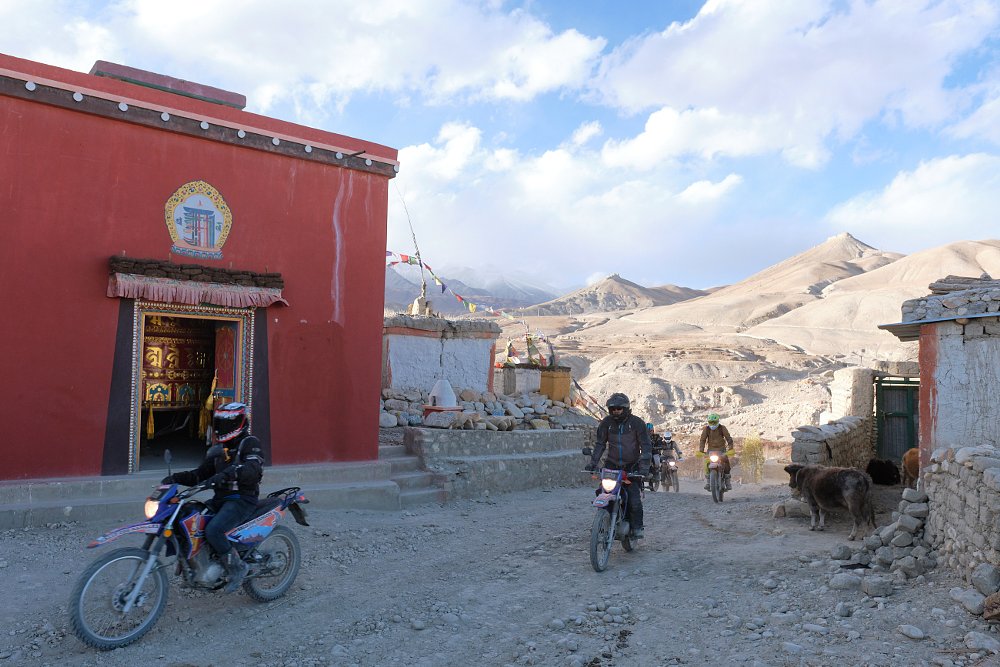
A real adventure, caught on film
In addition to Mongolia, Rally for Rangers has delivered bikes to parks in Argentina, Nepal, Bhutan, Peru, and this year, Namibia. Those rides have been adventures in their own right.
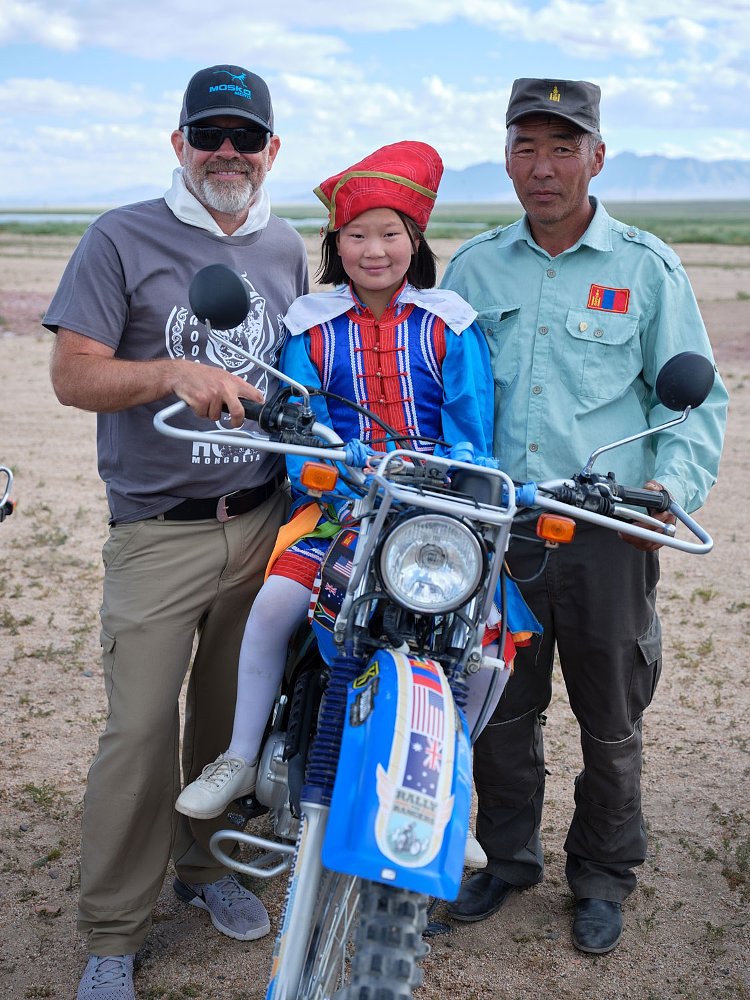
"I had never turned a tire off-road before I went to Mongolia," Medema said. "And I was in over my head immediately. Just terrifyingly so. I should have never been allowed. So I just hung back and, you know, crashed and learned, crashed and learned."
"The second year, we got stuck on a patch of land about the size of a football field, surrounded by flooding for two and a half days. We started collecting rainwater. We were stranded — couldn't go in any direction."
In 2017, two riders got separated from the group in the dark in the Gobi desert and a search party had to be sent out. Another year, the group became separated from their food and camping gear and a generous Kazakh family took them in.
"Fifteen motorcycles roll up to them, right, at 10 o'clock at night," Medema recalled. "And they put every bit of food they had out for us. They prepared the whole place for us to sleep. Crazy.
"If things didn't go wrong, it wouldn't be an adventure."
These adventures have been captured on film by Fisher Creative for a documentary (see the trailer) about the work, history, and challenges faced by the riders, rangers, and volunteers working with the group. Rally for Rangers gave me a chance to view it, and when I say it is among the most visually stunning documentaries I have ever seen, I mean it.
The documentary is being shown at film festivals and motorcycle events, including Get On! ADV Fest in the Black Hills of South Dakota, so I won't spoil too much, in case you want to catch it. But I can say that the impact of increasing the mobility of park rangers is emotionally affecting. It sticks with you.
Expanding abroad and at home
"2023 is our biggest year yet," said Medema. In addition to the annual trip to Mongolia, the organization is making its first trip to Namibia, where it will donate 15 motorcycles to community rangers. And for the first time, Rally for Rangers is putting on a U.S. ride.
Many people don't realize that some famous parks, such as Monument Valley, are tribal parks. Compared to federal NPS parks, tribal parks have less funding and face their own challenges. Poachers hunt elk, deer, and antelope, and another problem is pothunting, with people searching for and stealing antiquities, such as arrowheads, pottery, or beadwork, which is a federal crime.
"We are doing the first-ever Rally for Rangers U.S.A. ride to raise money to buy equipment for the Oglala-Sioux Park rangers," Medema said. The goal is to raise as much as $60,000 for equipment that will be used to protect wildlife and prevent pothunting, as well as fund search and rescue, fire response, and wildlife management programs.
There are 30 spots available for the South Dakota ride and about half are already filled. Participants pay an $800 fee, which covers camping fees, meals, support vehicles, and other expenses, and must raise a minimum $2,000 donation. For the U.S. ride, riders use their own motorcycles or can rent one.
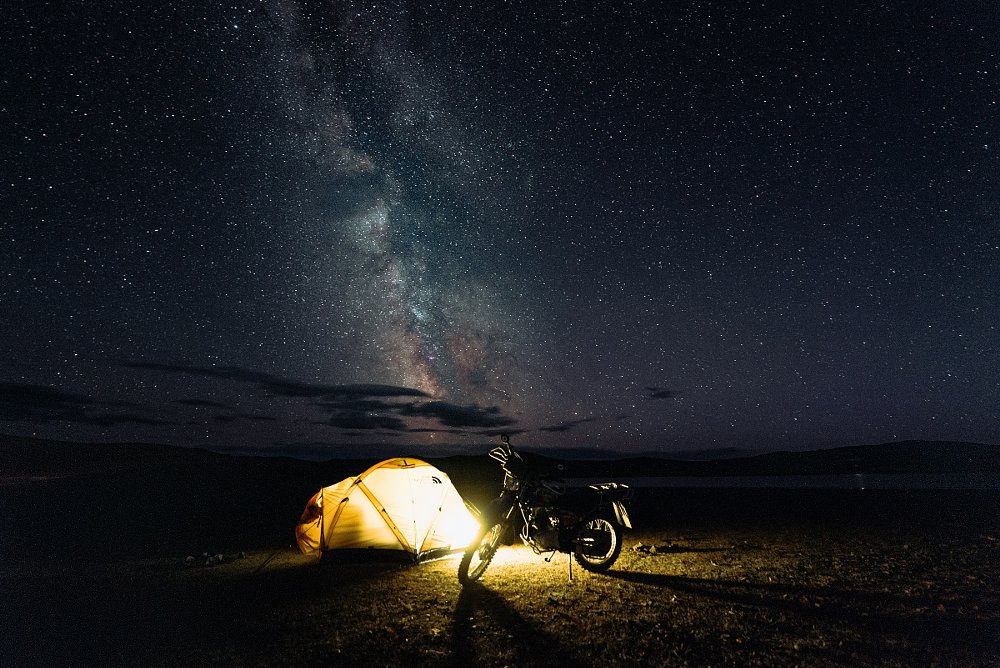
The U.S. rally also allows riders who can't meet the time demands or fundraising goals of the international trips to participate in Rally for Rangers. Rally for Rangers' international trips require $11,000 in fundraising, which covers the cost of the motorcycle to be ridden and donated (including purchase, tax, titling, licensing, and insurance) and all in-country rally expenses, from food to a local guide sourced within the community. Airfare to the destination country is not included.
The main barriers to entry are fundraising expertise and riding ability. But now even non-riders have a chance to participate as Rally for Rangers is hosting its first sweepstakes. The winner can either participate as a rider in the two-week ride in Mongolia in 2024 or can ride along in a support vehicle. One entry costs $25.
Despite being in operation for a decade, one of Rally for Ranger's biggest challenges has been in spreading the word. The organization has some industry sponsors, such as REV'IT and Alpinestars, along with other sponsors and partners. The documentary should also help with outreach.
Despite being completely volunteer-driven, Rally for Rangers isn't going away. But they are going places — and supporting rangers wherever they do.




